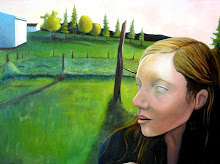



On Thursday I finally got a full-legnth tour (actually it was a bit longer and more in depth than normal) of the Pinchot Mansion. Initially I was not very excited about hearing the story of the Pinchots because I felt that they were just another rich family, and therefore there wouldn’t be any purpose in me learning about them. I study poor colonial Americans after all, why bother with rich nineteenth and twentieth century Americans anyway? I soon realized that the Pinchot story is not only very interesting, but it ties into many things that I have researched. As I was guided through the Pinchot house I began to wonder, how did these nineteenth century French immigrants view themselves, their ethnicity, and their place in American society? Were they Catholic? Did they experience any prejudice? I hope that throughout the summer I can answer some of these questions, and many more.
The best part of the tour, which a seasonal employee named Joe Blanco gave, was about Gifford Pinchot’s wife Cornelia. She was, even by 1920s standards, a progressive woman. She engaged in such unproper activities as wearing pants, gardening, and vacationing with a man before she was married. She was a suffragette who picketed against child labor, and she was an early advocate of birth control. She attempted to have a political career of her own, and although she was unsuccessful, she was extremely popular with the public and was credited with heling her husband win his two gubernatorial elections.
And now I am going to give you all my own quick tour of Grey Towers. For those of you who don’t know (which is probably most of you) Gifford Pichot was the father of the American Conservation movement, Chief of the National Forest Service under the Roosevelt Administration (TR) and a two-time governor of Pennsylvania.
Here is the main room of his house, called the grand hall. The house was constructed by Pinchot’s father, James, in 1886. This is the only room that Gifford and Cornelia didn’t make changes to when they moved in. This room was used for entertaining.
Here, in fact, is a picture of James Pinchot.
These are French doors located in the library. This was originally two rooms, but Cornelia decided that she liked it better as one big room. She was also responsible for putting in the doors, prior to her arrival they were only windows.
This terra cota camel is in the Pinchot’s dining room. The Pinchots liked to collect things from Asia. This camel dates from the 6th or 7th century.
The finger bowl is probably the biggest attraction of the tour. It was where the Pinchots dined with guests in the summer. Food was placed in wooden bowls and people would pass it to one another over the water. We simulate this with fake fruit and it is lots of fun.
I felt like I learned a lot from Joe’s tour. I will be expected to go on a few more to absorb more information and see how other employees conduct their own tours, so you all will be learning more about the Pinchots in the days to come.


No comments:
Post a Comment